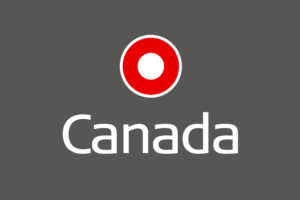Employee Perks in Canada
 Employee perks in Canada are a strong part of Canada’s benefit landscape. As with many countries, the fast-paced and highly competitive technology industry is very much a driving force behind these benefits.
Employee perks in Canada are a strong part of Canada’s benefit landscape. As with many countries, the fast-paced and highly competitive technology industry is very much a driving force behind these benefits.
Employers are now considering wellbeing programs as part of their recruitment and retention initiatives. Wellness has been a hot topic in Canada for a while now, however, the onset of multimedia for delivery of these services has taken center stage. Employee perks in Canada are filled with wellness driven products including digital wellness, health coaching, life-style, and flexible spending accounts that accommodate work-life-balance, and take a pro-active approach to employee engagement through gamification. These include:
- Digital wellness platforms – Digital wellness platforms that incorporate personalized programming and rewards tied to health care spending accounts or wellness spending accounts are becoming quite popular, especially with younger employees.
- Perks and loyalty programs – Give employees access to member services at a preferred rate. The costs can vary from free to S2 to $4 per employee per month. Some programs can provide global or North American savings, and are viewed as an opportunity to synchronize cross border offerings.
- Corporate health challenges – Provide team-based and individual challenges that are included in the membership fees (ranging from S245 to S350/month), in addition to other services, such as onsite fitness classes. Team challenges can include emails, promotional posters, and other materials created and sent by a vendor. Many programs use wearable devices to track fitness data. Some employers choose to purchase wearables for employees (taxable benefit) to incent participation.
- Health coaching – Coaching offers health navigation, health risk assessments, and health coaching. Programs are varied and can help with conditions from high cholesterol to back and neck pain, stress, depression, diabetes, and musculoskeletal conditions. Biometrics can also be included to assess baseline health for program coordination. There are varying levels of support offered, and costs vary.
- Health fairs – These events are an educational and interactive event designed for outreach and to provide basic preventive medicine and medical screening to employees at work in conjunction with workplace wellness. They can also be used to promote health and wellbeing initiatives and programs which are available to employees. Fairs can include wellness, perks, promotion of onsite fitness, training, and subsidized meal programs.
- Online digital health and fitness platforms – These are an increasingly popular low-cost option for health and wellbeing offerings because they are easily accessible programs available to employees as needed. They typically include health risk assessments, gamification, rewards, challenges, targeted behavior change messaging, and targeted health recommendations. Many wellness platforms can be unbundled or bundled with rewards and recognition, and EFAP. Some platforms put less focus on traditional ‘wellness’ and more on training the brain to see the positive. The goal is to help employees be happier, knowing that happy employees are more engaged and more productive.
- Virtual care – The intent is 24/7 health care access across Canada with responses in under 10 seconds for text. Images can be shared, and there are no time limits on chat or video calls. Employees can also reach nutritionists, naturopaths, and mental health specialists for an additional fee to employees. An online doctor visit may have a per appointment charge attached. Some services include prescriptions and delivery through an app.
- Mental health training – Leadership training on mental health, anti-stigma campaigns, mindfulness, and stress reduction programs are becoming common. Sit-stand workstations, walking work meetings, and treadmill workstations to support sedentary office workers may also be included.
- Employee wellbeing – Some employers are implementing ‘vacation blackout’ email policies that prevent employees on vacation from accessing or receiving work email. Flex benefit programs have added an opportunity for employees to buy ‘wellness days off.’ Sleep disorders are affecting more than 60% of the Canadian population, resulting in increased workplace accidents, chronic disease risks, and reduced productivity. More forward-thinking employers are investing in nap pods and encouraging employees to take a 15 to 30-minute afternoon nap to boost productivity in place of coffee breaks.
- Physical workplaces are being modified to encourage healthy behaviors. Some employers have centralized waste facilities to encourage employees to walk to the garbage. Cafeterias are being rearranged to orient healthy foods in more visible locations. ‘Bringing the outdoors in’ is a trend to help reduce stress and includes water displays, natural lighting, pictures of the outdoors, and living walls.
- Flexible employee benefits – Young employees are looking for flexible employee benefits and an employer that cares about their health and wellbeing.
- Onsite wellness initiatives – These include massages, Pilates, catered meals, healthy snack bars, and fitness challenges.
- Financial wellness – This includes financial education for employees, particularly around the importance of adequate retirement planning.
This article about employee perks in Canada is provided by Cowan Insurance Group, Asinta’s employee benefits consulting Partner in Canada.
